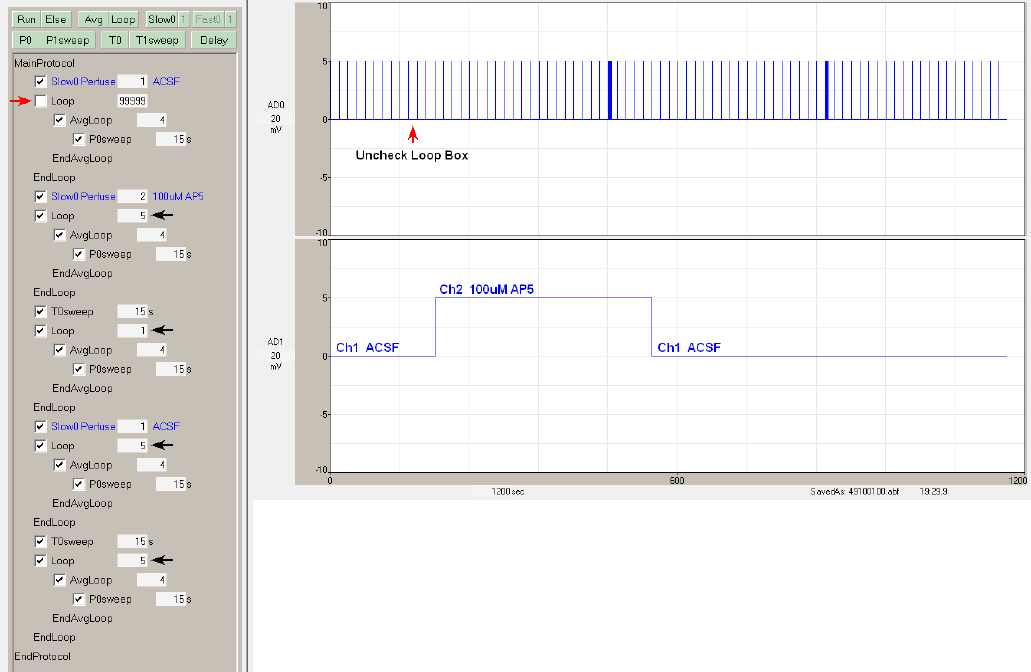User manual

182
Fig. 10.2.7.4 shows an example of a sequential protocol with Automated Perfusion plus signal averaging
of P0sweep, where the baseline ends and the rest of the protocol begins when the baseline Loop
checkbox is unchecked (red arrows). The solution is switched to 100 uM AP5, 5 minutes later a T0sweep
train is delivered, 1 minute after that the solution is switched back to ACSF, and 5 minutes after that, a
T0sweep train is delivered in ACSF. The black arrows show the number of loops which is equivalent to
time in minutes in between perfusion and train events (this is because 4 P0sweeps of 15 second periods
are averaged).
Fig. 10.2.7.4. Running an Automated Perfusion sequential protocol experiment with signal averaging of
sweeps. The sequential protocol starting with ‘Ch2 100uM AP5’ begins when the baseline loop checkbox
is unchecked (red arrows). The black arrows show the number of loops, and therefore the time in minutes
(because four P0sweeps of 15 second long periods are averaged). See SequentialPerfusionAvg.pro.
Connections are the same as Fig. 10.2.7.2.
In a future 2.xx version we will adding a ‘SubProtocol’ capability to the Protocol Builder scripting to
condense repeating statements and make the script clearer (Fig. 10.2.7.5). (This ‘SubProtocol’ is similar
to a subroutine in Basic, and this is why there actually is a ‘MainProtocol’!)










